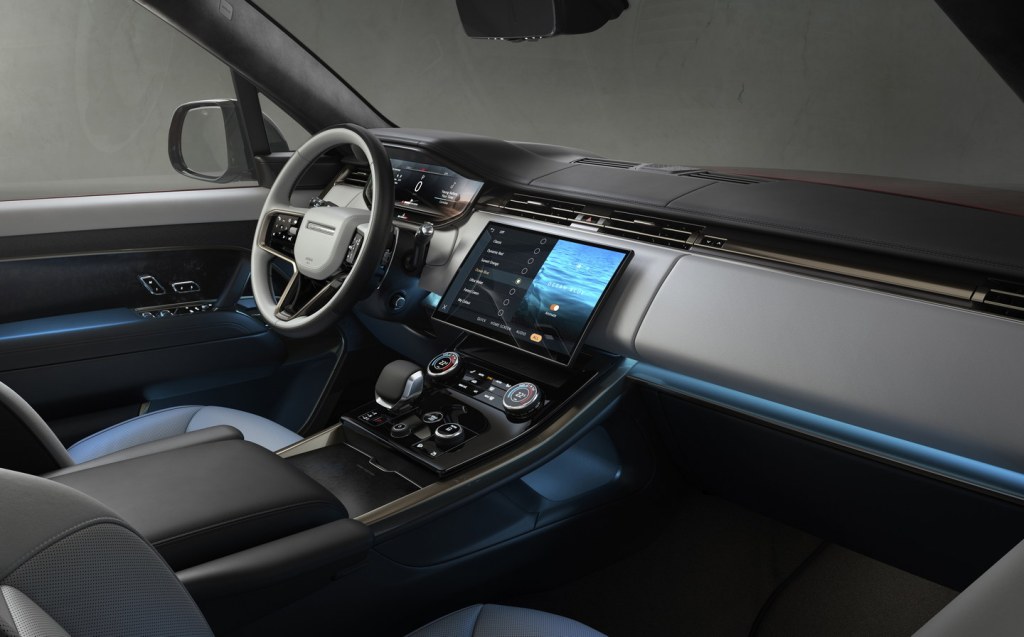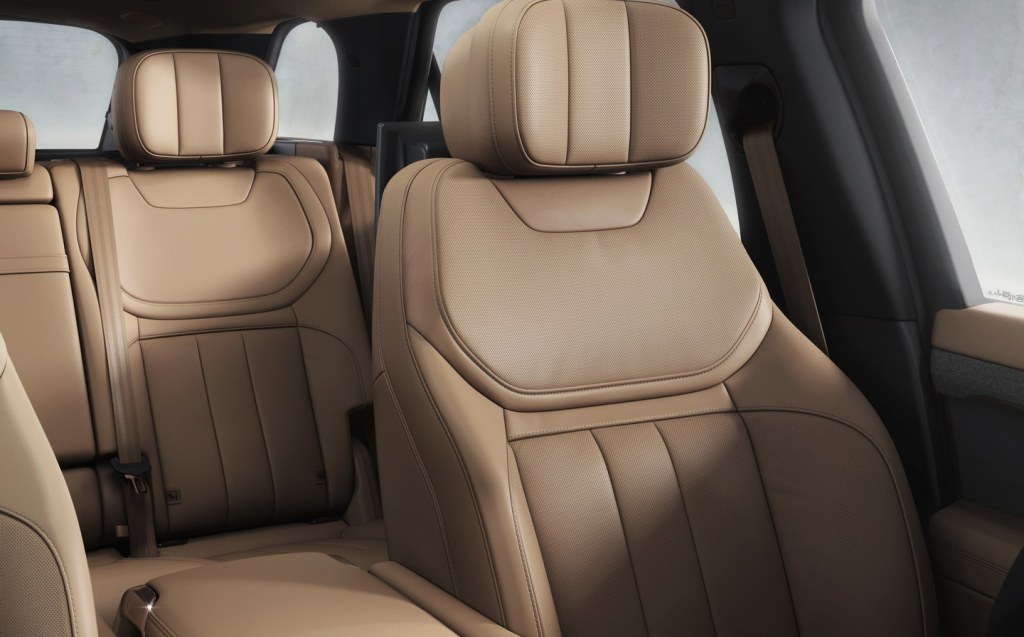New Range Rover Sport for 2022 revealed: hybrid power, up to 522bhp and pure-electric model due in 2024
From low-emission PHEVs to thumping V8s
Following hot in the wheel tracks of the fifth-generation Range Rover, we now have details and images of the all-new third-gen Range Rover Sport — the luxury model’s more affordable and slightly sportier sibling.
We’re told by Land Rover that a clean-sheet design has ushered in a new era of ‘reductionism’, echoing what has already been demonstrated in the Range Rover (Land Rover’s marketing people call it “Sporting Luxury”), though the exterior design of the new Range Rover Sport is very much evolution, not revolution.
More sustainable materials, non-leather upholstery, a suite of driver assistance systems and a powertrain to suit every need make this the most advanced Range Rover Sport yet, though that should go without saying with an all-new model.
Engine and powertrain options
Pricing will initially start from £79,125 for the D300 diesel. Almost every version will feature some form of electrification, starting with the diesel and petrol powertrains. Both stick with 3-litre straight-six-cylinder internal combustion engines and harness 48-volt electric drive technology. The mild-hybrid systems enhance fuel economy and reduce emissions, while still offering a traditional driving experience (no plugs involved).

A trio of diesels will comprise a 246bhp D250, 296bhp D300 and range-topping 345bhp D350.
Two six-cylinder petrol engines, badged as the P360 and P400, produce 355bhp and 395bhp respectively.
For now, the most potent Range Rover Sport will be the P530. Powered by a BMW-developed 4.4-litre twin-turbocharged V8 engine, it will also be the fastest accelerating Range Rover Sport at launch, taking only 4.5 seconds to reach 62mph.
Two plug-in hybrid versions will also be available, badged as the P440e and P510e. Emitting 18g/km, both feature 3-litre six-cylinder petrol engines combined with an electric motor that drives an eight-speed automatic gearbox.
Their 38.2kWh battery provides up to 70 miles of driving in pure-electric mode — around three times that of the outgoing Range Rover Sport P400e PHEV (click for our long-term review). Real-world electric range is usually less than the official figure but Land Rover says it expects the car to manage 54 miles between charges, even in cold weather, and when loaded with passengers and luggage.
The Range Rover Sport is one of the few PHEVs capable of fast DC charging, meaning that on a 50kW rapid charger it needs less than an hour to get the battery back up to 80%, while a domestic 7.2kW AC wallbox will fully charge it in under five hours.

However, those longing for a pure-electric Range Rover Sport will have to wait a little longer as it is not due for introduction until some time in 2024.
Subtle design changes
But it’s the design of the new car that will appeal most to buyers. Still very much a Range Rover Sport, it looks leaner than before and features shut lines (gaps between the body panels) that are half the width of the outgoing vehicle’s.
Door handles sit flush with the bodywork when locked, and the glass area is almost uninterrupted, appearing to form a single piece around the car. An elongated roof spoiler adds drama to the side profile.

Creating further distinction from the Range Rover, the rear lights form a horizontal band that spans the full breadth of the car, wrapping around the sides and incorporating the Range Rover lettering. The rear number plate placement moves southwards beneath the electrically operated tailgate.
Dynamic versions adopt a more road-biased appearance with larger wheels and the entire body painted in the same colour. This suggests a sportier, almost high-performance look, and it appears to bring the Range Rover Sport closer to the ground.
A more pronounced chin splitter slightly reduces the approach angle, so if you intend to go off-road, this is one factor to consider when specifying the car.
The headlight units are around 20% smaller than before and use LED digital light projection (DLP) technology to scan the road ahead, then can dip the full beam around up to sixteen different vehicles simultaneously.
To make the interior feel more driver-focused, the designers raised the surfaces up around the driver, such as the centre console. The angled dashboard layout is home to a digital instrument display and a floating 13.1in touchscreen with haptic feedback that runs Land Rover’s latest Pivi Pro software.

In a bid to add a further layer of refinement, Land Rover and Meridian have co-developed a noise cancelling system that uses information from microphones placed in each wheelarch to produce a cancelling sound frequency that filters out unwanted road and tyre noise while driving.
It’s part of the 29-speaker Meridian Signature Sound System that includes a pair of speakers in each of the four main seats to create a ‘quiet zone’ for each occupant. Most of the stereo system speakers are hidden behind fabric surfaces in the doors.
On the aesthetic side, a new Moonlight chrome metallic finish defines the functional areas of the interior, while material insert options include forged carbon that is produced using offcuts of the lightweight material.
A broader range of materials are available for the interior than before, including new options from ‘Ultrafabrics’ that replicate the look and feel of leather yet are produced from recycled materials. It is a modern alternative, and interior design manager Lee Perry says that it is also easier to clean.

The rear seats benefit from an 11mm rise over the front seats to enhance visibility, with legroom and kneeroom improving by 31mm and 17mm in comparison to the previous car. Boot space measures 450 litres, swallowing as much as 1,860 litres with the rear seats folded forward.
Deliveries of the new 2022 Range Rover Sport begin later in 2022, with prices in the UK starting from £79,125.
Related articles
- After reading about the new Range Rover Sport, you should read Will Dron’s review of the 2022 Range Rover
- Don’t miss this wonderful account of what it was like to be on the original Range Rover launch in 1970 (sponsored)
- And you might be interested to read Will Dron’s extended test of the 2020 Range Rover Sport P400e plug-in hybrid










































